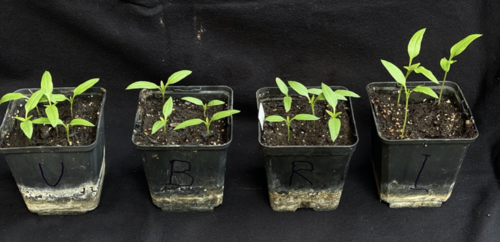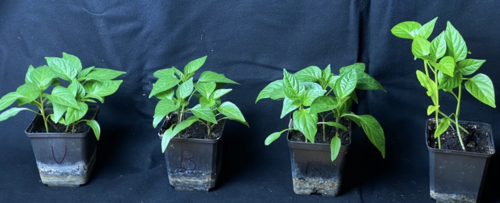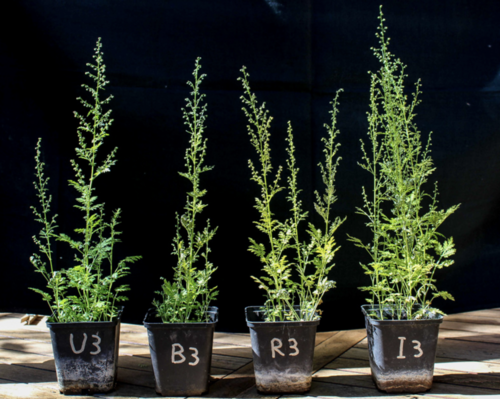Torsten Arncken
In the following, I would like to present a project that was begun in 2021:
With LED technology it is possible to emphasize different light spectra, from ultraviolet to blue and red to infrared, in white light, roughly corresponding to four ranges of sunlight. In doing so, I am looking for ways to detect the effects of the ether types on plant growth.
The effects of the modified light on the shape, scent, and taste of plants grown under each respective influence are investigated phenomenologically. As a methodical extension, the “symbolizing of pure perception” of scent and taste is used to enable extrasensory observations of the light effects.
In the first two examples with Paprika (sweet pepper), I would like to show that light has a formative effect on the seedlings from very early on, and that this tendency is then maintained. In the seedlings we already see that the plants illuminated with a stronger infrared component (far right) are more long-stemmed and are the tallest plants of all variants. With blue illumination (second from left) leaves and stems are shorter. With red illumination (second from right), the leaf blades are larger and the plants appear more relaxed. With the addition of UV to the light (far left), the leaves stay green longer and the plants appear more densely shaped.
Artemisia annua, in the final example, shows the same effects in the shape of the plants. With greater UV in the lighting, the plant appears fresh green and harmoniously formed. With blue light the plant is stocky: the leaves are green but they remain near the ground. With red, the leaves are lighter green and continue up the stem. With the addition of infrared light, the plants stretch upward and the leaves go even higher.
Other projects
In cooperation with Weleda, I support their “Actives” and “Galenics” research departments where new cosmetic products are developed. My task is to observe the qualities of plant substances and to work out their effect on humans. For example, the prickly pear (Opuntia) product line – for the care of dry skin – was developed in collaboration with anthroposophically working dermatologists.
In addition, I have other areas of research that I work on to the extent of half a day per week. For example, since 2013 I have been working with Carsten Gründemann, assistant professor for translational complementary medicine at the University of Basel. Currently, we are conducting experiments to investigate how different plant species deal with heat. The aim is to arrive at internal images from concrete observations of how the plant’s heat system behaves. How does external heat transform into the internal heat of an organism? This plays a role in understanding the immune system and the intervention of the ego organization in the organism.
 From left to right: ultraviolet, blue, red, infrared. Paprika seedlings after one week of illumination.
From left to right: ultraviolet, blue, red, infrared. Paprika seedlings after one week of illumination. From left to right: ultraviolet, blue, red, infrared. Paprika after four weeks of illumination.
From left to right: ultraviolet, blue, red, infrared. Paprika after four weeks of illumination. From left to right: ultraviolet, blue, red, infrared. Artemesia.
From left to right: ultraviolet, blue, red, infrared. Artemesia.